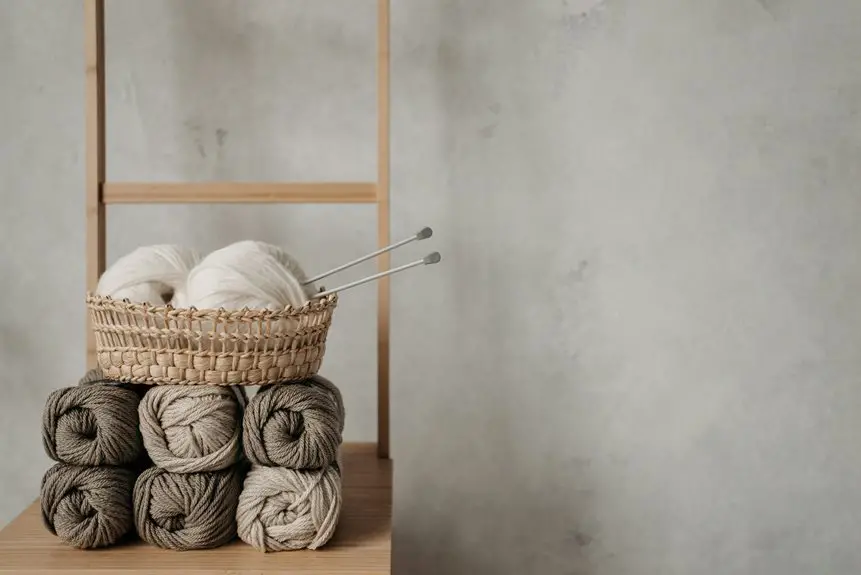You might think 100% cotton is the ultimate choice for staying cool during workouts, but that belief can actually work against you. Cotton’s ability to absorb sweat means it holds moisture close to your skin, which can leave you feeling damp and uncomfortable. Before you reach for that cotton tee next time you exercise, consider how this fabric really performs when things get sweaty—it’s not as straightforward as you might expect.
Table of Contents
Key Takeaways
- Cotton absorbs sweat but retains moisture, causing dampness and discomfort during sweaty activities.
- Breathability alone isn’t enough; moisture-wicking fabrics pull sweat away for quicker evaporation and cooling.
- Cotton’s high moisture retention traps sweat, reducing evaporative cooling and increasing overheating risk.
- Synthetic blends enhance cotton by improving drying speed, durability, and moisture management.
- Advanced cotton treatments exist but pure cotton still underperforms compared to modern moisture-wicking fabrics.
The Difference Between Breathability and Moisture-Wicking
How do breathability and moisture-wicking differ when it comes to sweaty activities? You might think they’re the same, but they play distinct roles.
Breathability factors refer to how well a fabric allows air to flow through, helping heat escape and keeping you cool. Moisture-wicking, on the other hand, actively pulls sweat away from your skin, speeding up moisture evaporation to keep you dry.
When you’re working out or doing anything sweaty, you need both. Breathability lets air circulate, preventing overheating, while moisture-wicking manages sweat before it saturates your clothes.
Understanding these differences helps you choose gear that supports your comfort better than just relying on one aspect. Remember, effective moisture evaporation is key to staying dry and comfortable during intense activities.
How Cotton Handles Sweat Compared to Synthetic Fabrics
When you consider breathability and moisture-wicking, it’s clear that not all fabrics handle sweat the same way.
Cotton’s natural fibers excel in cotton absorbency, soaking up moisture quickly but holding onto it, which can leave you feeling damp during sweaty activities.
On the other hand, synthetic fabrics prioritize synthetic durability and moisture management, pulling sweat away from your skin and drying faster.
Here’s how they compare:
- Cotton absorbs sweat thoroughly but dries slowly, increasing discomfort.
- Synthetics wick moisture efficiently, keeping you dry longer.
- Cotton’s softness offers comfort but can become heavy when wet.
- Synthetics maintain shape and performance even in intense conditions.
Understanding these differences helps you choose the right fabric for your sweat-heavy activities.
The Impact of Cotton’s Moisture Retention on Comfort
Although cotton soaks up sweat quickly, its ability to hold moisture can greatly affect your comfort during physical activities. When cotton retains moisture, it stays wet longer, making you feel clammy and heavy. This moisture retention lowers comfort levels, especially during intense sweating.
| Moisture Retention | Comfort Levels |
|---|---|
| High | Low – wet and sticky |
| Moderate | Moderate – damp |
| Low | High – dry and light |
When you wear cotton in sweaty conditions, the fabric traps moisture close to your skin. This reduces evaporation and cooling, causing discomfort. So, despite cotton’s breathability claim, its moisture retention can work against you during workouts or hot weather.
Technological Advances in Improving Cotton’s Performance
Since cotton’s natural moisture retention can hinder comfort during sweaty activities, recent technological advances have focused on enhancing its performance.
You’ll find that cotton innovations now improve breathability and moisture management without sacrificing softness. For example, manufacturers use special treatments and fabric blends to boost cotton’s functionality.
Here’s what you should know:
- Moisture-wicking finishes help cotton dry faster, keeping you comfortable.
- Blending cotton with synthetic fibers increases durability and quick-drying capabilities.
- Nanotechnology coatings repel water while maintaining fabric softness.
- Enzyme treatments break down fibers slightly, enhancing airflow and reducing heaviness.
These advancements make cotton more versatile for activewear, challenging the myth that 100% cotton is unsuitable for sweaty activities.
Choosing the Right Fabric for High-Intensity Activities
If you want to stay comfortable and perform your best during high-intensity activities, choosing the right fabric is essential.
Performance fabrics are designed to wick moisture away from your skin, keeping you dry and preventing chafing. Unlike 100% cotton, which soaks up sweat and stays wet, fabric blends often combine synthetic fibers like polyester or nylon with natural fibers to maximize breathability and durability.
These fabric blends offer quick-drying properties and better ventilation, helping regulate your body temperature effectively. When picking workout gear, look for materials labeled moisture-wicking or engineered for high performance.
Frequently Asked Questions
Does Cotton Cause Skin Irritation When Soaked With Sweat?
When your cotton clothing soaks up sweat, it can hold moisture against your skin, increasing the risk of skin irritation. Cotton’s sweat absorption might make you feel damp and uncomfortable during sweaty activities, causing irritation.
Can Cotton Fabrics Be Recycled or Upcycled After Sports Use?
You can recycle cotton fabrics after sports use through specialized recycling methods that break fibers down. Upcycling projects let you creatively transform worn sportswear into rags, bags, or quilts, extending their life and reducing waste.
How Does Cotton’s Environmental Impact Compare to Synthetic Fibers?
Like a garden nurtured with care, cotton’s environmental impact hinges on sustainable farming, but its slow fiber degradation contrasts with synthetics releasing microplastics, making your eco-friendly choice a balance of biodegradability and resource use.
Are There Specific Cotton Blends Better for Sweat Management?
You’ll find cotton blends with synthetic fibers improve moisture management during sweaty activities. These blends wick sweat better than pure cotton, keeping you drier and more comfortable by combining natural softness with enhanced breathability and quick-drying properties.
How Does Cotton Perform in Cold-Weather Sweaty Activities?
Ever wondered how cotton handles sweat in cold weather? It traps moisture, making you cold and uncomfortable. For better sweat management, you’ll want moisture-wicking fabrics that keep you dry and warm during chilly workouts.
- Are There Durable Fabrics for Shower Curtains That Resist Mold? - June 6, 2025
- Choosing Durable Fabric for Curtains in High-Sun Windows? - June 6, 2025
- What’s the Most Durable Fabric for Pet Beds? - June 6, 2025







